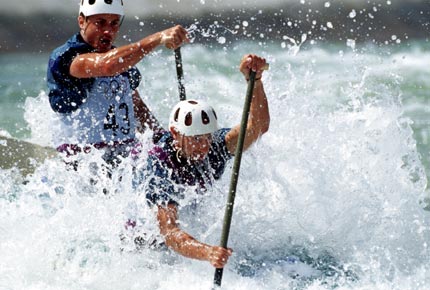
Sydney, 20 September 2000. C2 canoe/kayak. Marek Jiras and Thomas Mader (CZE), 3rd. Credit: Getty Images/Clive Brunskill
A whalebone and driftwood frame, with a sea-lion skin stretched tautly over it and waterproofed with whale fat, hardly suggests a budding Olympic sport. Yet the kayaks that meant life to the Inuits in the Arctic for centuries have become the racing kayaks of the modern world - even if the building materials have changed.
The link was 19th century British barrister John MacGregor. He studied the ancient kayaks, designed a similar boat and disappeared into the rivers and lakes of Europe's wilderness to become a noted travel writer of his time. When others copied his boat, he founded the Royal Canoe Club, and canoe regattas began a year later in 1866.
Canoe/kayak, consisting solely of the sprint, was a demonstration competition at the 1924 Olympic Games before gaining full-medal status in 1936. Europe remains the traditional power base, led by Germany, Sweden and the athletes of the former Soviet Union.
The slalom events, involving men's K1, C1 and C2 and women's K1 (denoting one or two paddlers in a canoe or kayak), require the paddlers to negotiate 20 to 25 gates in turbulent water over a 300-metre course. Competitors aim to complete the course in the shortest time, factoring in penalties.
(BOCOG)